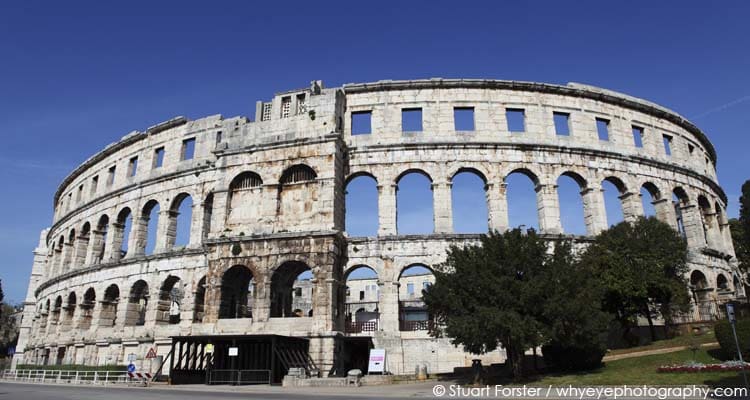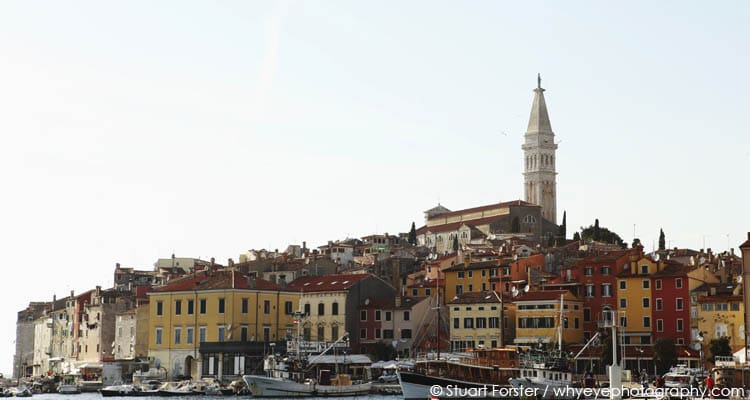Stuart Forster looks at reasons to visit Croatia in the summer.
Zagreb, Croatia’s capital city is an attractive entry point to a land whose coast has long been drawing foreign visitors.
Prior to the outbreak of World War One, in 1914, the resort town of Opatija, on the Adriatic coast, was regarded as one of Europe’s finest seaside destinations. Aristocrats and well-to-do members of the Austro-Hungarian society spent prolonged periods in fashionable Opatija, which was given special status as a climatic wellness resort. They would enjoy long perambulations on the Lungomare promenade, which even today affords fine views of Kvarner Bay, and more strenuous walks up to the summit of Mount Ucka, at 1,401 metres above sea level.
Opatija’s Croatian Museum of Tourism
Opatija retains many of the fine villas and grand hotels that helped elevate its reputation, especially from the 1860s onwards. One of the oldest buildings – Villa Angolina, built in 1844 as a summer residence for Iginio Scarpa, a wealthy merchant from the town of Rijeka – is regarded as the birthplace of tourism to the region. Today the villa houses the Croatian Museum of Tourism and conveys how royal visits and developments to the region’s transport infrastructure helped stimulate the take-off of tourism to the Adriatic.
Many people are surprised to learn that sunbathing and beach holidays are a relatively recent development. The Austro-Hungarian aristocrats preferred visiting over the winter months, due to Opatija’s mild micro-climate. You don’t need a thermometer for evidence of that, a stroll through the Botanical Gardens will suffice. Exotic species from around the world thrive, including banana plants. Wellness treatments remain popular and a modern thalassotherapy centre stands within the centre of the town.
Pula and the Roman Empire
Elsewhere in Croatia bears evidence of domination by an even older empire than that of Austro-Hungary. The Romans held sway over the region around 2,000 years ago and some of the best-preserved examples of their influence can be seen in the city of Pula.
Much of Pula’s vast amphitheatre remains intact. The ancient entertainment venue was constructed from around 27BC to 68AD, with three tiers of stone arches rising around a central arena. Today you can see artefacts displayed beneath the ground, in subterranean chambers once used to house gladiators and other performers. A Roman temple, dedicated to Augustus, stands in the centre of the city, along with three of ancient gates.
The most spectacular is the Arch of the Sergii, a triumphal arch recording the exploits of three brothers during the Battle of Actium – a decisive naval engagement of 27BC in which the combined fleet of Mark Anthony and Cleopatra was defeated. Today the gate stands on a pedestrianised city shopping street between pastel-coloured buildings.

Dubrovnik and the coast
Croatia also has coastal resorts providing a balance between urban centres rich in heritage and affordable, family-orientated beach holidays. One of the reasons why Dubrovnik has become such a popular hub for summer tourism is that it offers the combination of a UNESCO World Heritage Site medieval walled city with a historic harbour plus beaches renowned for crystal waters.
As a destination for a city break, Zagreb is a fine option. The heart of the thriving capital is attractive and sufficiently compact to explore easily on foot. Perhaps it’s the legacy of Austro-Hungarian rule and the region’s balmy Mediterranean-style climate that provides the city with an effusive café culture. You’re never going to run short of places to enjoy good, strong coffee and recharge between sightseeing. Petar Preradović Square, named after a 19th-century poet but known locally as ‘Flower Square’ because of the colourful florists’ stalls, and Tkalčićeva, a street running between the upper and lower towns, are two of the most popular places to unwind and people watch.
Things to do in Zagreb
The upper town is rich in history and a rewarding place to wander with a camera. St Mark’s Square is the site of Croatia’s national parliament and named after a 13th-century church with a colourfully tiled roof, depicting the coats of arms of Croatia, Dalmatia and Slavonia. On warm afternoons the wooden benches on the tree-lined Strossmayer Promenade provide both shade and views over the lower town.
Lotrščak, a stone tower dating from the Middle Ages, overlooks that walkway and if you’re nearby at noon be prepared for the boom of the gun fired from it daily and once used by residents to set their clocks.
Shopping in central Zagreb
A funicular runs between the upper and lower town. At just 66 metres in length, it revels in its reputation of being one of the shortest in the world; journeys last a mere but memorable 55 seconds. At its foot runs Ilica, the bustling street that locals know as Zagreb’s main artery. On it you’ll find the ornate Oktagon shopping arcade, a late 19th-century construction with a glass ceiling and a number of upscale boutiques.
Carry on for another couple of minutes and you’ll reach Ban Jelačić Square, named after the sword-wielding general, Josip Jelačić, whose equine statue sits at its centre. This is the heart of the city and it’s common for Zagreb’s residents to arrange to meet with friends “under the horse’s tail” so don’t be surprised to see people milling around behind the hero who abolished serfdom. From 18 April don’t be you may also see people dressed in historic costumes, singing songs and recreating ladies’ markets, known as Kumice, of bygone days.
Visit on a weekend and you can also see people in national costume manning a number of the stalls at Dolac market, just off the square. It’s another good spot for photography and picking up regional products for a picnic in one of Zagreb’s parks or as souvenirs of a visit to Croatia.
Summer is a fine time of year to explore the history-rich cities, coastal resorts and rolling countryside of Croatia.
Map of Croatia
Zoom into the map of Croatia, below, to see areas in greater detail:
Travel to Croatia
KLM operates flights to Zagreb via its Amsterdam hub.
Jet2 flies between Newcastle and Dubrovnik.
Further information
Find ideas for travel in Croatia via the Croatian National Tourist Board website.
Photos illustrating this post are by Why Eye Photography.
‘Like’ the Go Eat Do Facebook page to see more photos and content.
If you enjoyed this post why not sign up for the free Go Eat Do newsletter? It’s a hassle-free way of getting links to posts on a monthly basis.




Elaine
June 27, 2015 at 11:07Another good reason to go in summer is to avoid autumn – I took a trip to Dubrovnik and Cavtat in October, without checking the weather. Rivers of rain, not just the odd shower. I’m not put off though. Haven’t been to Zagreb yet, but I see there are cheap flights to Zadar from Manchester …